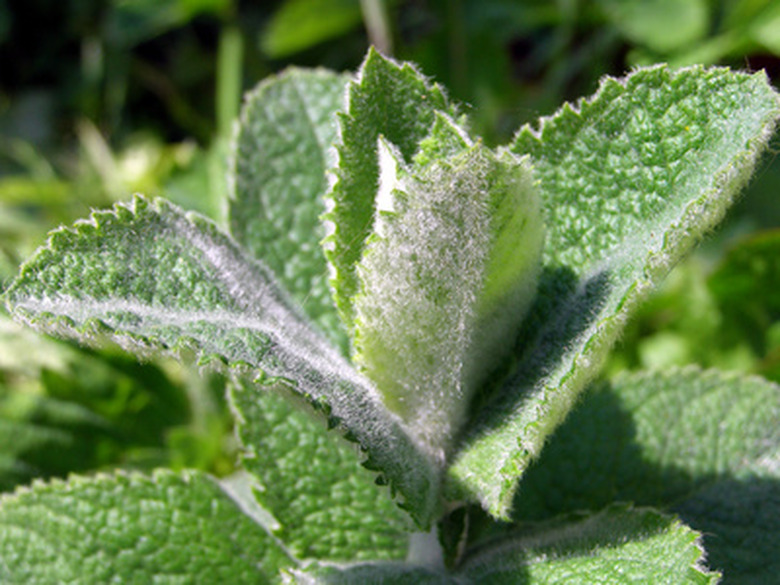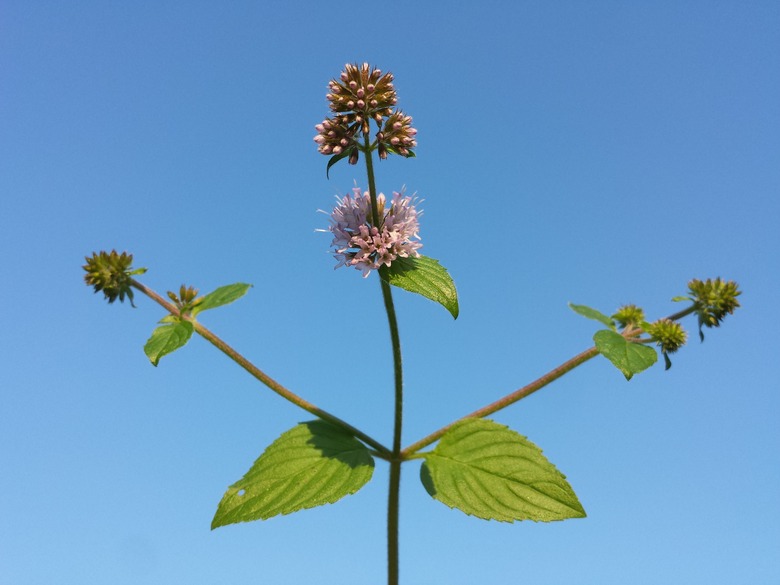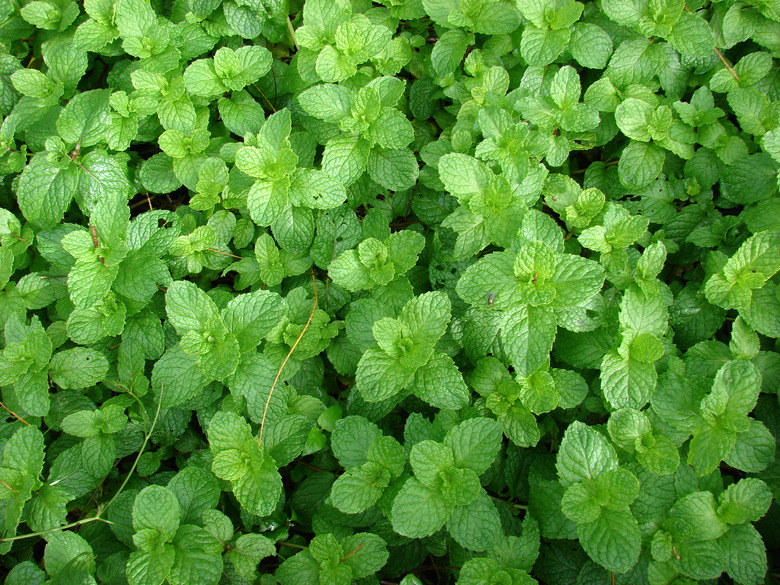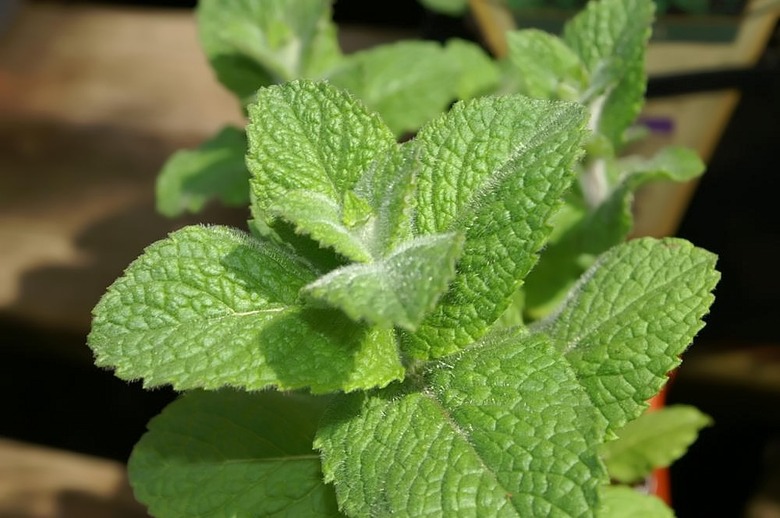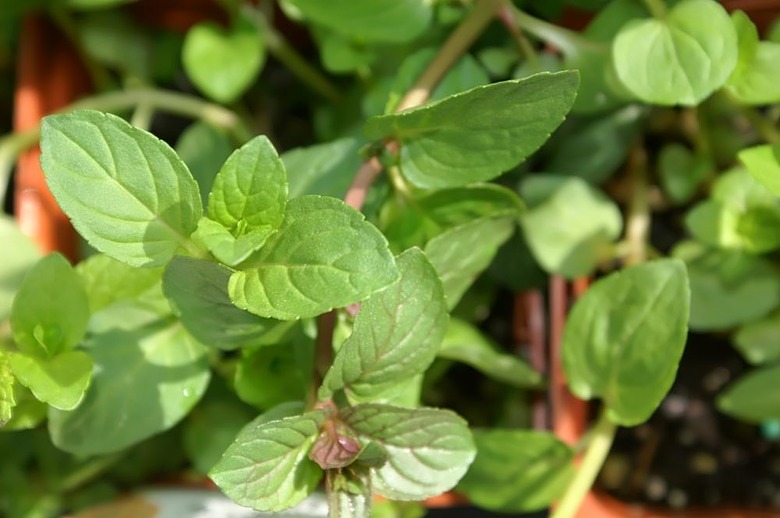A Guide To Different Types Of Mint Leaves
Gardeners can easily find a favorite type of mint to grow because there's so much diversity among these plants. Classified in the genus Mentha, mint plants belong to the plant family Lamiaceae, which includes other fragrant herbs as well as certain ornamental plants.
**There are approximately 20 species of mint plants as well as numerous hybrid crosses and cultivars.** Even though mint is a flowering plant, which benefits pollinators, most gardeners grow it because of the fragrant and flavorful leaves that contain essential oils used for culinary, medicinal and aromatherapy purposes.
Shared Characteristics of Different Kinds of Mint Plants
With so much diversity in leaf shape, size, color and texture, there are also numerous common attributes among different kinds of mint plants. For example:
- The leaves are arranged opposite each other on mint's
characteristic square stems.
- The stems root easily.
- Plants quickly spread
by rhizomatous runners.
The last two characteristics contribute to the invasive potential of mint.
Warning
Because of how quickly it spreads, you may want to plant mint in a container to keep it confined instead of in your flowerbed where it may overtake your other plants.
Native Types of Mint Plants
Two types of mint plants that are North American natives are wild mint, also called field mint or gingermint (Mentha x gentilis), and water mint (Mentha aquatica), both of which are perennials in USDA zones 5 to 9.
- Wild mint has fragrant leaves that are marked with a striking variegated
pattern of green and yellow.
- Water mint has green leaves that may have a
purplish cast, and the foliage may be hairy or smooth. True to its common name, water mint may grow in streams, ditches, marshes or wet meadows where it rapidly spreads.
Other Types of Mint Plants
Let's take a look at a handful of other types of mint plants and their leaves.
Spearmint and Peppermint
Two of the most commonly grown types of mint plants are spearmint (Mentha spicata, zones 4 to 11) and peppermint (Mentha x piperita, zones 5 to 9).
Unlike most types of mint plants, which have hairy leaves, spearmint has smooth leaves with few to no hairs. Flowers may be pink or white.
Peppermint is a naturally occurring hybrid of the native water mint and spearmint. Its dark green leaves have characteristic toothed margins, and it produces pink or lavender flowers.
"Fruity" Mint Plants
"Fruity" names of mint plants include apple mint (Mentha suaveolens), lemon mint (Mentha x piperita f. citrata) and pineapple mint (Mentha suaveolens 'Variegata'), all of which are perennials in hardiness zones 5 through 9.
Apple mint has light green leaves and pink or white flowers; lemon mint has dark green leaves with lavender flowers; and pineapple mint has variegated leaves that are pale green with white margins, although some leaves may be solid green or solid white. Pineapple mint's flowers also vary in color, including shades of white, pink, lavender and purple.
Chocolate Mint
Although apple, lemon and pineapple mint types have a minty flavor mixed with the type of fruit in their common names, chocolate mint (Mentha x piperita f. citrata 'Chocolate') doesn't taste like its name hints.
The word "chocolate" in its common name refers to its chocolate brown stems and a hint of chocolate fragrance, but it has a minty, citrusy taste.
Tip
Cut mint when the leaves are dry, which means not only waiting for a dry period after rain events but also waiting until the dew dries on plants.
Tips for Harvesting Mint Leaves
Harvest individual mint leaves or sprigs any time during the growing season. If you're starting from seed or starting from small transplants, wait to harvest until the roots have taken hold and plants are at least several inches tall.
You can cut stems to within 1 inch of the ground, but avoid cutting all the stems on a plant so that there is enough remaining foliage to continue photosynthesizing.
References
- Penn State University: Mint
- Midwest Invasive Species Information Network: Wild Mint
- Midwest Invasive Species Information Network: Water Mint
- North Carolina State Extension: Mentha Spicata
- Missouri Botanical Garden: Mentha x Piperita
- Missouri Botanical Garden: Mentha Suaveolens
- Missouri Botanical Garden: Mentha x Piperita f. Citrata
- University of Wisconsin-Madison: Pineapple Mint – Mentha Suaveolens 'Variegata'
- Missouri Botanical Garden: Mentha x Piperita 'Chocolate'
